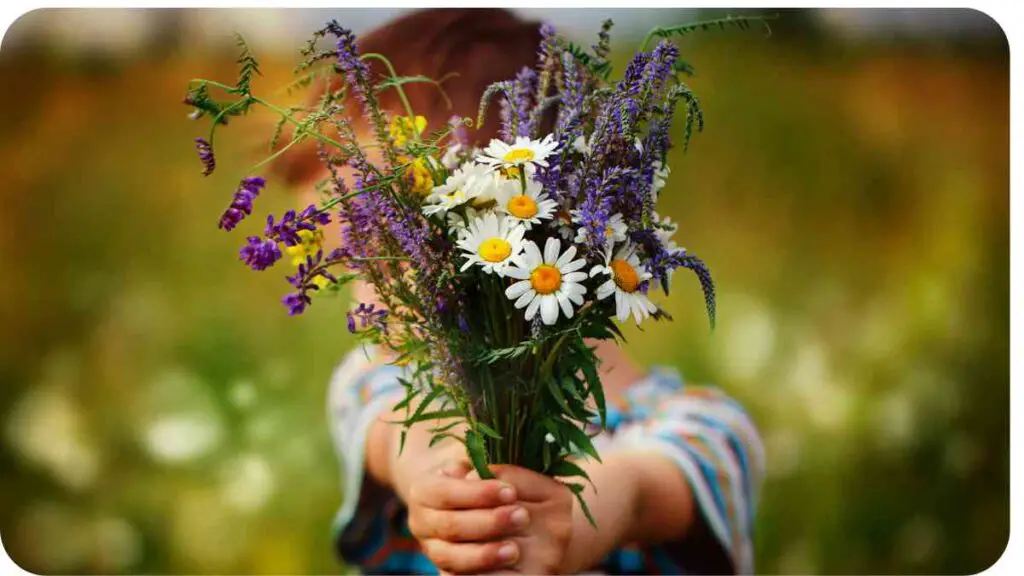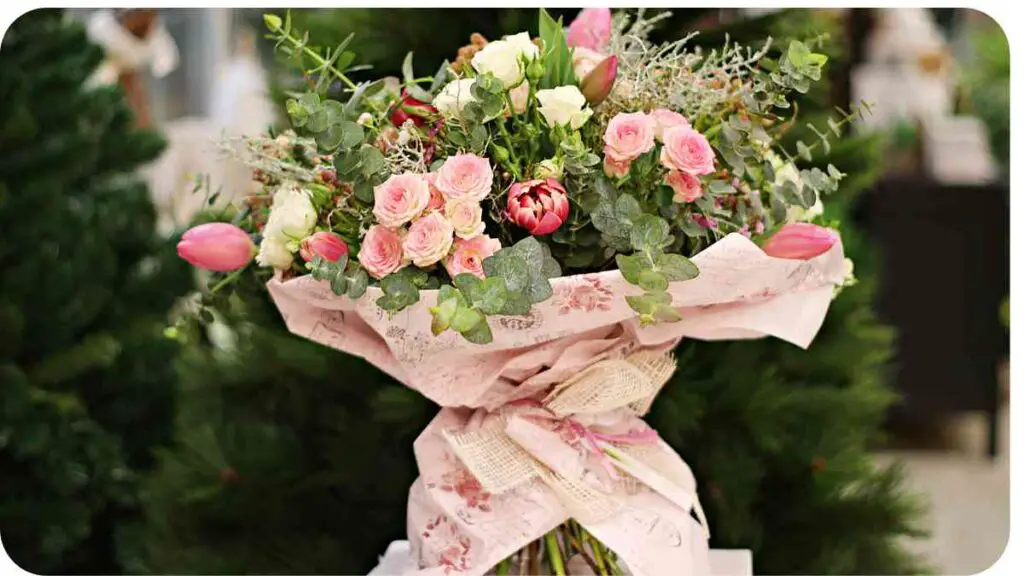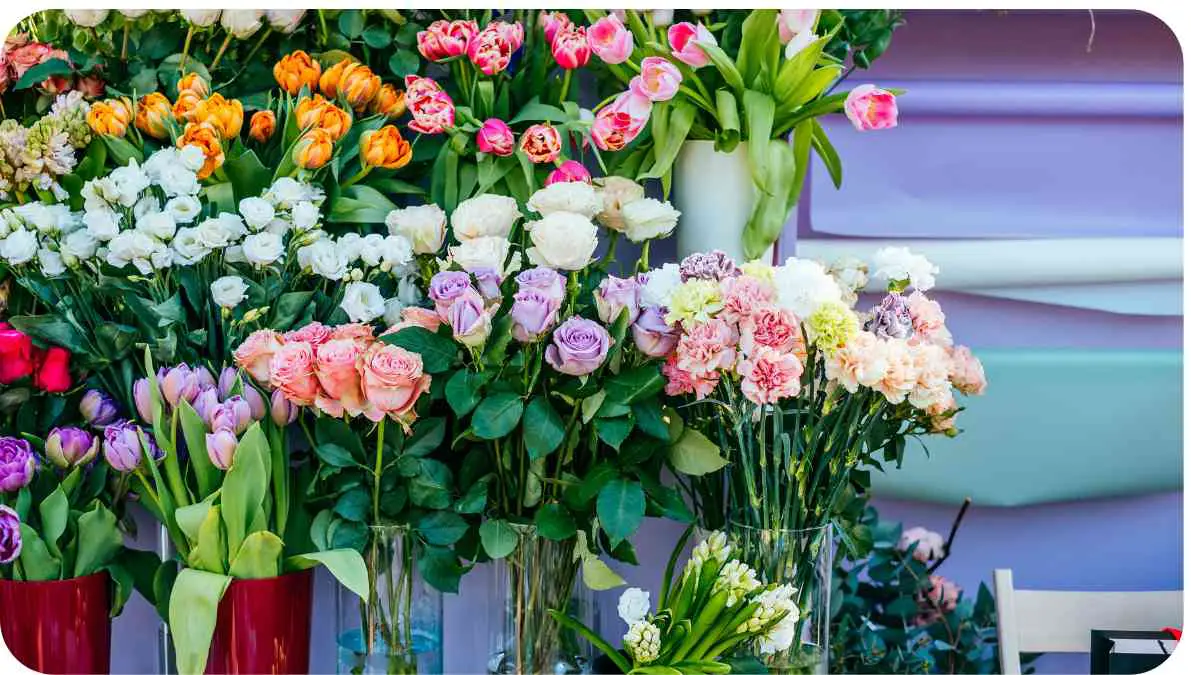When it comes to creating the perfect bouquet, choosing the right flowers is essential. Whether you’re celebrating a special occasion or simply want to brighten someone’s day, understanding the most common bouquet flowers can help you create a stunning arrangement.
In this guide, we’ll explore popular types of bouquet flowers, factors to consider when choosing them, arrangement techniques, caring tips, and their significance in various celebrations.
| Takeaways |
|---|
| 1. Understand the symbolism and meanings behind popular bouquet flowers. |
| 2. Consider seasonal availability when selecting flowers for your bouquet. |
| 3. Learn essential care tips to prolong the life of your bouquet. |
| 4. Explore different arrangement techniques for creating stunning floral displays. |
| 5. Personalize bouquet choices to suit specific occasions and recipient preferences. |
Understanding Bouquet Flowers

What Makes a Great Bouquet?
A great bouquet blends colors, shapes, and textures harmoniously to create a visually appealing arrangement. It should reflect the occasion and the personality of the recipient, whether it’s romantic roses for a lover or vibrant sunflowers for a cheerful celebration.
Creating beautiful bouquets requires understanding the art of floral design. When you explore The Art of Bouquet and Flowers: Creating Floral Masterpieces, you’ll gain insights into combining colors, textures, and shapes to craft stunning arrangements that captivate and convey emotions beautifully.
Popular Types of Bouquet Flowers
Roses
Roses are perhaps the most iconic bouquet flower, known for their elegance and symbolism. They come in various colors, each carrying its own meaning. Here’s a breakdown of different rose colors commonly used in bouquets:
| Color | Meaning |
|---|---|
| Red | Love, passion |
| White | Purity, innocence |
| Pink | Gratitude, admiration |
| Yellow | Friendship, joy |
Lilies
Lilies are another popular choice for bouquets, prized for their graceful appearance and delicate fragrance. They are available in several varieties, each with unique characteristics:
| Variety | Characteristics |
|---|---|
| Asiatic | Vibrant colors, unscented |
| Oriental | Large blooms, fragrant |
| Calla | Elegant trumpet-shaped blooms |
Tulips
Tulips are loved for their simplicity and vibrant colors, making them a staple in spring bouquets. Their availability varies by season, influencing their use in floral arrangements:
| Season | Availability |
|---|---|
| Spring | Widely available |
| Summer | Limited varieties |
| Fall | Limited availability |
| Winter | Typically unavailable |
Peonies
Peonies are beloved for their lush, romantic blooms and are often used in wedding bouquets. They come in different varieties, each with its own blooming season:
| Variety | Blooming Season |
|---|---|
| Herbaceous | Late spring to early summer |
| Tree | Late spring |
Sunflowers
Sunflowers bring a touch of warmth and cheer to bouquets with their large, bright blooms. They vary in size and petal count, offering versatility in floral arrangements:
Tulips are a classic choice for spring bouquets. Their vibrant colors and elegant shapes make them perfect for Tulip Bouquet Flowers: A Spring Celebration. Incorporating tulips into your floral designs brings a fresh and cheerful vibe, making any arrangement feel like a celebration of the season.
| Size | Petal Count |
|---|---|
| Large | 15+ |
| Medium | 10-15 |
| Small | Less than 10 |
Factors to Consider When Choosing Bouquet Flowers

Color Schemes and Meanings
Choosing the right color scheme is crucial as each color carries symbolic meaning. For instance, red symbolizes love and passion, while yellow signifies friendship and joy. Harmonizing these colors can convey a specific message or evoke a certain emotion.
Seasonal Availability
Consider the season when selecting bouquet flowers as availability can affect cost and quality. Spring blooms like tulips and peonies are abundant, while sunflowers thrive in late summer.
Fragrance and Allergies
Some flowers are highly fragrant, adding an aromatic element to bouquets, while others are hypoallergenic, suitable for allergy-prone individuals. Consider these factors when selecting flowers, especially for sensitive occasions.
Choosing flowers with delightful fragrances can elevate any bouquet. Discovering Flowers That Smell Good: Fragrant Floral Favorites to Delight allows you to add a sensory experience to your arrangements. These fragrant flowers not only look stunning but also fill the air with enchanting aromas.
Arrangement Techniques for Bouquet Flowers
Traditional vs. Modern Arrangements
Traditional bouquet arrangements focus on symmetry and balance, using a variety of flowers and foliage. Modern arrangements, on the other hand, may incorporate unconventional elements like succulents or wildflowers for a more eclectic look.
DIY Tips for Arranging Your Own Bouquet
For DIY enthusiasts, arranging your own bouquet can be a rewarding experience. Start with a focal flower, add complementary blooms and greenery, and secure the bouquet with floral tape before wrapping it with ribbon or twine.
Caring for Bouquet Flowers
Watering and Maintenance Tips
Proper care ensures your bouquet stays fresh and vibrant for longer. Here are essential tips for watering and maintaining bouquet flowers:
- Trim Stems: Trim stems at an angle before placing them in water to facilitate water absorption.
- Change Water Regularly: Replace water every 2-3 days to prevent bacterial growth.
- Remove Foliage: Remove leaves below the waterline to keep the water clean.
- Use Flower Food: Add floral preservatives to extend the life of your bouquet.
Selecting the right flowers for a condolence bouquet can be challenging. Our guide on the Best Flowers to Send for Condolences: A Guide provides thoughtful recommendations to help you choose blooms that express sympathy and support, offering comfort during difficult times through their beauty and meaning.
How to Extend the Life of Your Flowers
To maximize the lifespan of your bouquet, place it away from direct sunlight and drafts. Mist flowers with water to maintain humidity and remove wilted blooms promptly to encourage new growth.
Special Occasions and Bouquet Flowers
Weddings
Wedding bouquets often feature roses, lilies, and peonies, reflecting the bride’s style and wedding theme. Consider seasonal blooms and colors that complement the bridal party attire for a cohesive look.
Anniversaries
Mark milestones with anniversary bouquets that symbolize enduring love and commitment. Personalize arrangements with meaningful flowers and colors that hold sentimental value for the couple.
Birthdays
Brighten birthdays with cheerful bouquets featuring sunflowers, tulips, or vibrant mixed arrangements. Consider the recipient’s favorite flowers and colors to create a personalized gift that celebrates their special day.
Conclusion
Choosing bouquet flowers involves more than just aesthetics—it’s about selecting blooms that convey emotions and enhance celebrations. By understanding popular types of bouquet flowers, factors to consider when choosing them, and care tips, you can create memorable floral arrangements that leave a lasting impression.
Incorporate your personal style and preferences when arranging bouquets, and don’t hesitate to experiment with different flowers and colors to create unique combinations. Whether it’s a wedding, anniversary, or everyday gesture, let bouquet flowers express your sentiments beautifully.
Further Reading
Here are some additional resources to explore more about bouquet flowers:
- Types of Bouquets and Flowers: Discover various types of bouquets and popular flowers used in floral arrangements.
- Martha Stewart’s Guide to Popular Flowers: Martha Stewart offers insights into popular flowers and their uses in bouquets and arrangements.
- List of Common Florist Flowers: Explore a comprehensive list of common flowers used by florists, including their characteristics and care tips.
FAQs
What are the best flowers for a wedding bouquet?
For weddings, roses, lilies, and peonies are popular choices due to their beauty and symbolism of love and romance.
How do I choose the right bouquet flowers for a specific occasion?
Consider the theme of the occasion and the recipient’s preferences. Choose flowers that convey the appropriate emotions and complement the event’s decor.
What should I consider when selecting bouquet flowers for someone with allergies?
Opt for hypoallergenic flowers such as orchids, hydrangeas, or roses with fewer pollen grains. Avoid highly fragrant flowers like lilies or freesias.
Can I create a bouquet with seasonal flowers?
Yes, seasonal flowers not only ensure freshness but also align with the natural cycle of blooms, offering a cost-effective and environmentally friendly choice.
How can I make my bouquet flowers last longer?
Regularly change the water, trim stems at an angle, and keep the bouquet away from direct sunlight and drafts. Adding floral preservatives can also extend their lifespan.

I am Hellen James, a landscape architect. For many years I have written about landscaping for various publications; however, recently decided to focus my writing on personal experience as a profession.

